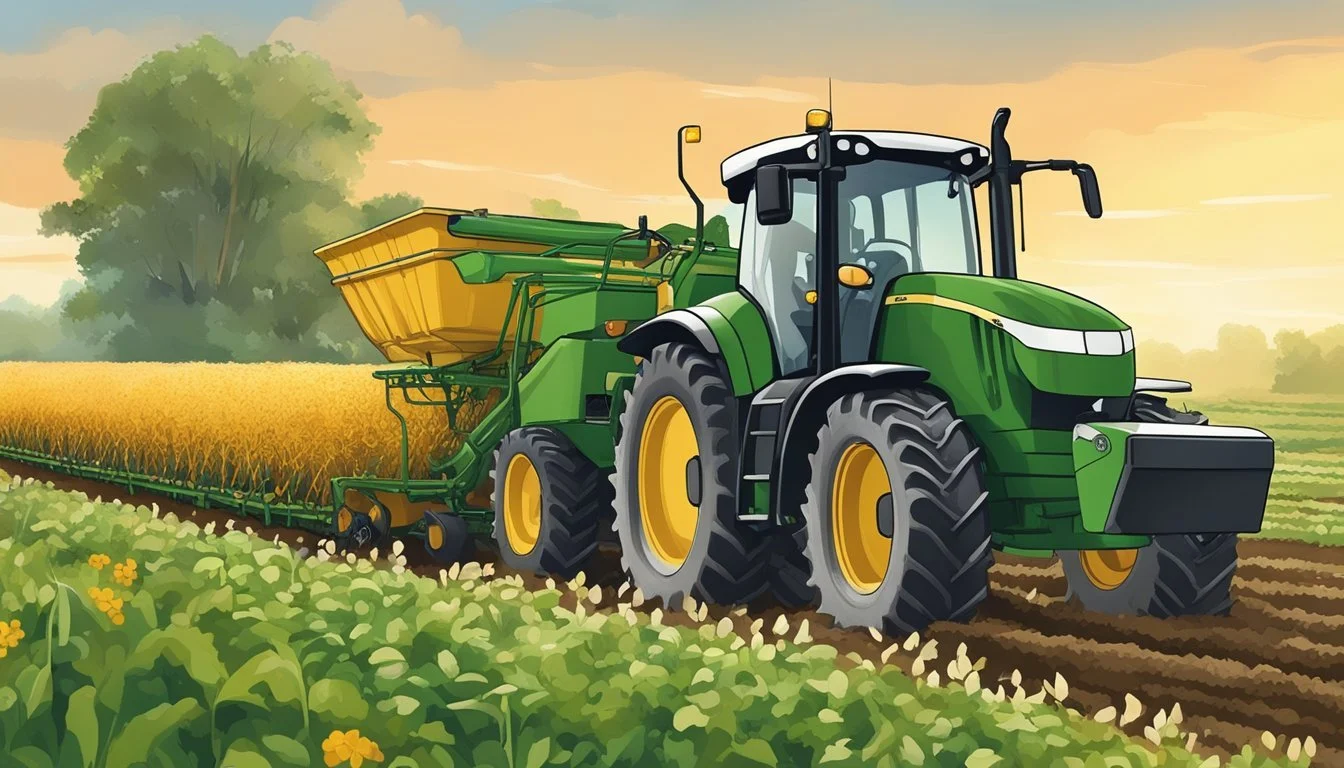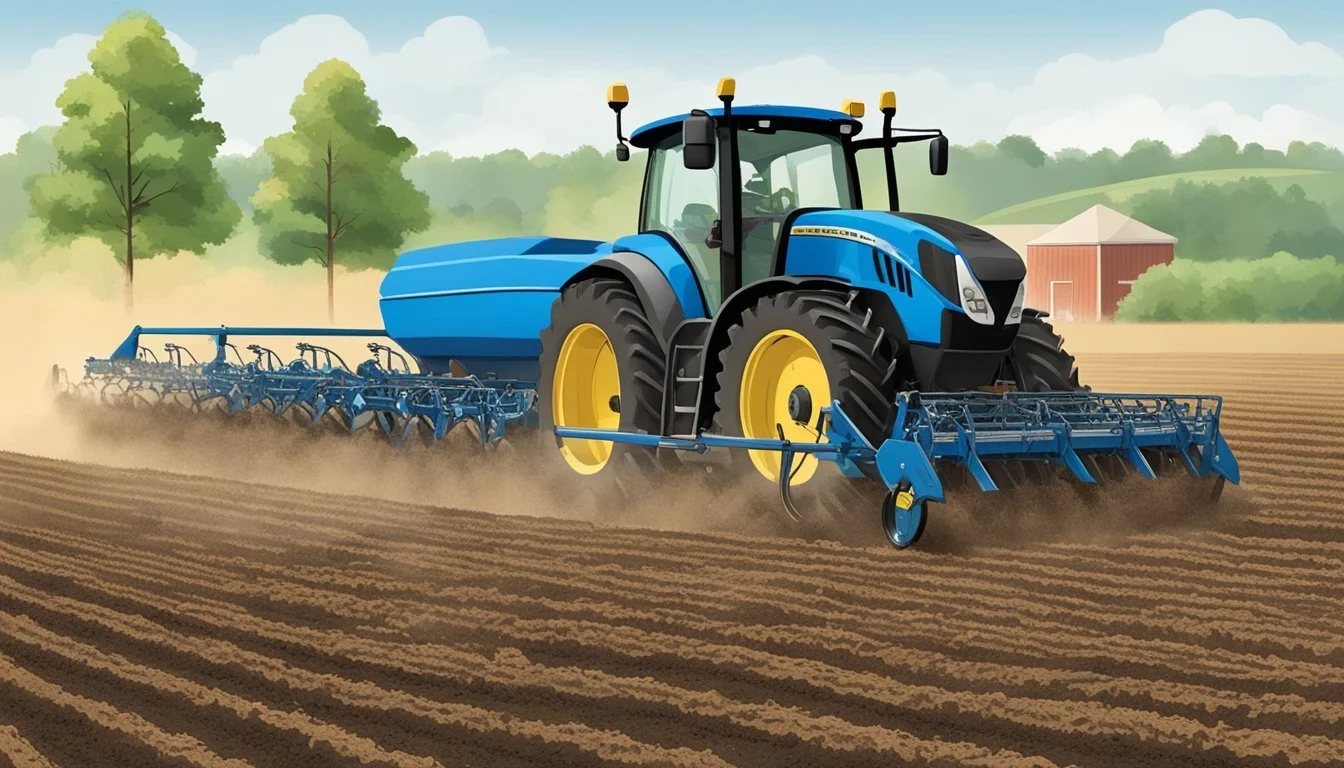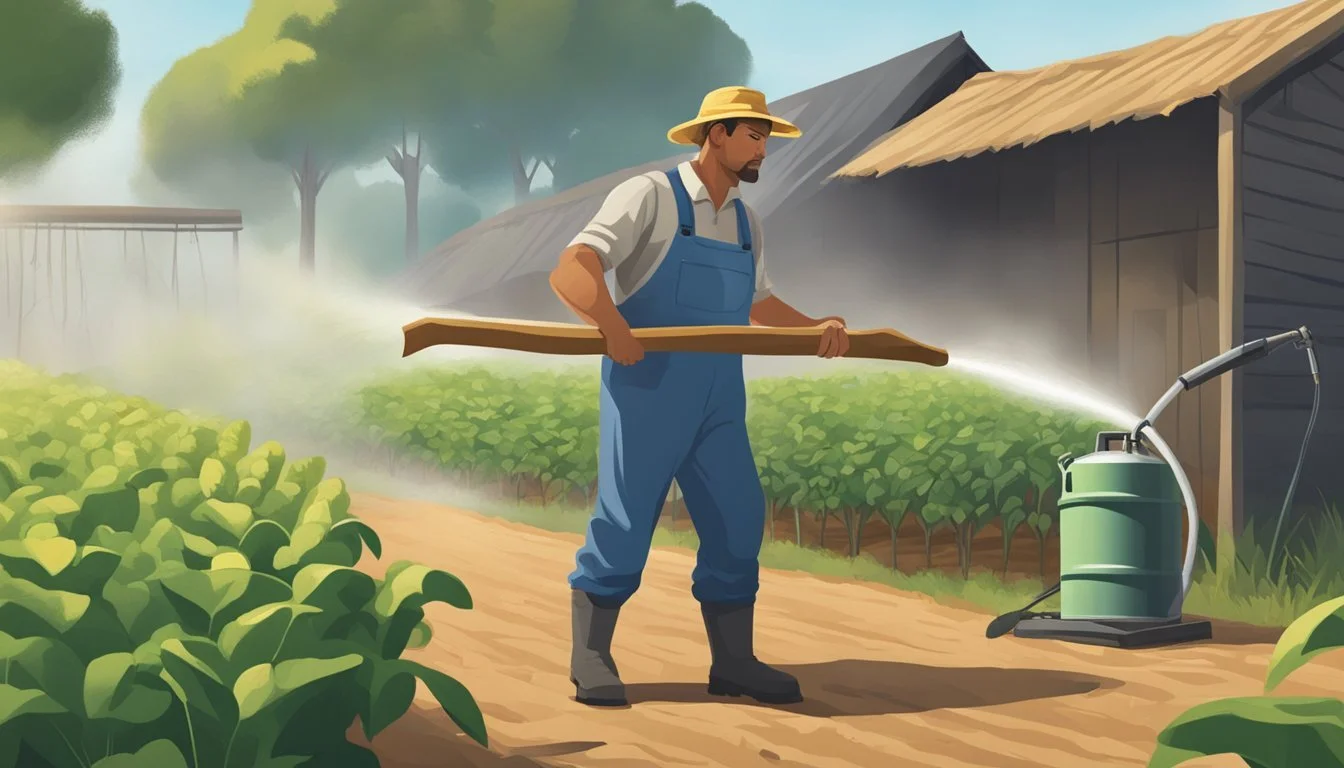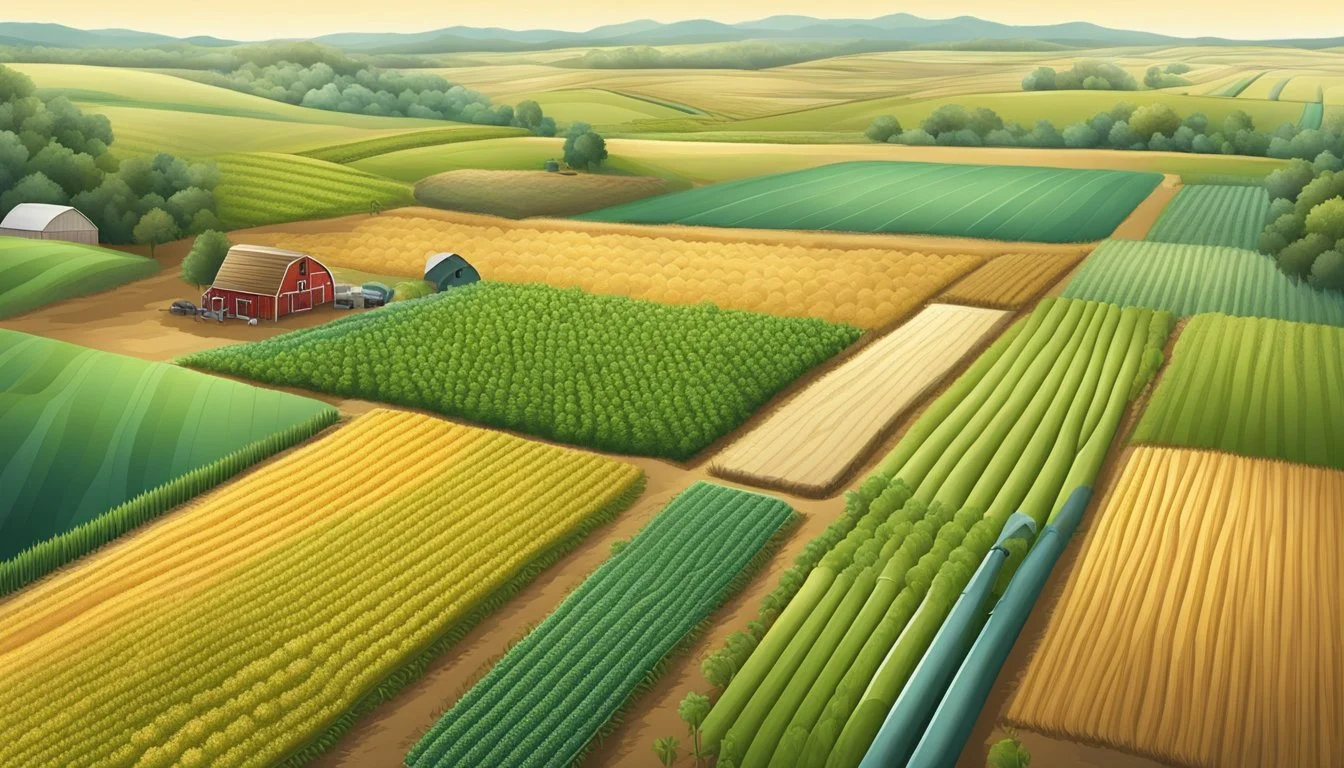Juan Corona: 7 Agricultural Practices Changed After the Machete Murderer's Spree
Farm Safety Reforms in California
Juan Corona's brutal murders of 25 migrant farm workers in California in 1971 shocked the nation and exposed serious vulnerabilities in agricultural labor practices. The case drew attention to the often overlooked and exploited communities of seasonal workers who form the backbone of America's food production system.
Corona's crimes spurred significant changes in how farms manage and protect their labor force, leading to reforms that continue to shape agricultural practices today. From improved worker housing and documentation to enhanced security measures and labor rights, the aftermath of the Machete Murderer's spree left a lasting impact on the agricultural industry. These changes aimed to prevent similar tragedies and improve the overall welfare of farm workers.
1) Crop Rotation Innovations
Crop rotation practices evolved significantly in the years following Juan Corona's crimes. Farmers began implementing more diverse rotation systems, moving beyond simple two-crop cycles.
Multi-year rotations incorporating three or more crop types became more common. This approach helped reduce pest pressures and improve soil health.
Researchers developed new rotation strategies tailored to specific regions and soil types. These customized plans maximized yields while minimizing environmental impacts.
Cover crops gained popularity as part of rotation systems. Farmers planted species like clover between main crop cycles to protect and enrich the soil.
Advanced modeling tools emerged to help farmers optimize their rotation schedules. These programs considered factors like market demand, weather patterns, and soil nutrient levels.
Precision agriculture techniques allowed for more targeted crop placement within rotations. Farmers could adjust planting based on detailed soil data from different field sections.
Organic farmers pioneered complex rotations involving diverse vegetable and grain crops. These systems demonstrated the potential for maintaining productivity without synthetic inputs.
2) Enhanced Pest Control Methods
The Juan Corona case highlighted the need for improved pest control practices in agriculture. Farmers realized that better methods were necessary to protect crops and workers alike.
Integrated Pest Management (IPM) gained popularity as a more holistic approach. This strategy combines biological, cultural, and chemical control methods to manage pests effectively.
Farmers began using pheromone traps to monitor insect populations. This allowed them to make informed decisions about when and where to apply pesticides.
Crop rotation became more widely adopted as a natural way to disrupt pest lifecycles. By changing the crops grown in a field each season, farmers could reduce pest populations without chemicals.
Biological control methods saw increased use. Beneficial insects and microorganisms were introduced to combat harmful pests, reducing reliance on chemical pesticides.
Precision agriculture technologies emerged, enabling targeted pesticide application. GPS-guided sprayers and drones allowed farmers to apply treatments only where needed, minimizing environmental impact.
These enhanced pest control methods not only improved crop protection but also created safer working conditions for farm laborers. The changes reflected a growing awareness of the interconnectedness between agricultural practices and worker safety.
3) Introduction of No-Till Farming
No-till farming emerged as a revolutionary agricultural practice in the wake of the Corona murders. This method involves planting crops without disturbing the soil through tillage, a stark contrast to conventional farming techniques.
The primary goal of no-till farming is to minimize soil erosion and preserve soil structure. By leaving crop residues on the field, it creates a protective layer that helps retain moisture and reduce runoff.
Farmers who adopt no-till practices typically use specialized equipment to plant seeds directly into the untilled soil. This approach can lead to improved soil health and increased organic matter content over time.
No-till farming offers several potential benefits, including reduced fuel consumption, lower labor costs, and improved water infiltration. It can also help sequester carbon in the soil, contributing to climate change mitigation efforts.
Despite its advantages, the adoption of no-till farming faced initial challenges. High equipment costs and a steep learning curve were among the factors that slowed its widespread implementation.
As awareness of soil conservation grew, no-till farming gained traction. Its use expanded significantly from the 1990s onward, with the practice now implemented on a substantial portion of global croplands.
4) Wider Adoption of Organic Farming
In the wake of Juan Corona's crimes, a shift towards organic farming practices gained momentum in California's agricultural sector. Farmers sought safer and more sustainable methods to cultivate their crops and manage their land.
Organic farming emphasizes natural pest control, crop rotation, and soil health without synthetic chemicals. This approach appealed to many farmers looking to distance themselves from the migrant labor issues associated with conventional farming at the time.
The transition to organic practices also aligned with growing consumer demand for chemical-free produce. Many farmers saw this as an opportunity to rebuild trust with consumers and create a positive image for their operations.
Organic certification programs emerged, providing guidelines and standards for farmers to follow. These programs helped establish credibility and differentiate organic products in the marketplace.
The adoption of organic farming led to increased biodiversity on farms and reduced environmental impact. It also created new job opportunities that attracted a different workforce, helping to reshape the agricultural labor landscape in the region.
5) Use of Cover Crops for Soil Health
Cover crops have gained significant attention in agricultural practices for their role in improving soil health. These plants are grown between main crop seasons to protect and enhance soil quality.
Farmers have increasingly adopted cover crops to address soil erosion concerns and boost fertility. Common cover crop varieties include legumes, grasses, and brassicas, each offering unique benefits to the soil ecosystem.
Research has shown that cover crops can increase soil organic matter and improve soil structure. They help prevent nutrient leaching and enhance water retention capacity, creating a more resilient soil environment.
Cover crops also contribute to weed suppression and pest management, reducing the need for chemical interventions. Their root systems help break up compacted soil layers, improving drainage and aeration.
While immediate changes in soil composition may be subtle, long-term use of cover crops has demonstrated measurable improvements in soil health indicators. Farmers are encouraged to view cover cropping as a long-term investment in their land's productivity.
As agricultural practices evolve, the use of cover crops stands out as a sustainable approach to maintaining and improving soil health. This practice aligns with broader efforts to promote environmentally conscious farming methods.
6) Precision Agriculture Technologies
Precision agriculture technologies emerged as a significant advancement in farming practices following the Corona murders. These tools allow farmers to optimize resource use and increase crop yields through data-driven decision-making.
GPS-guided tractors and drones equipped with sensors enable precise mapping of fields. This data helps farmers apply fertilizers, pesticides, and water more efficiently, reducing waste and environmental impact.
Variable rate technology adjusts input application based on soil conditions and crop needs. This targeted approach maximizes productivity while minimizing costs and potential runoff.
Yield monitoring systems track crop performance in real-time, allowing farmers to identify areas requiring attention. This information guides future planting and management decisions.
Remote sensing technologies provide insights into crop health, pest infestations, and soil moisture levels. Farmers can address issues promptly, preventing potential crop losses.
These precision agriculture tools have transformed farming operations, leading to increased sustainability and profitability. By optimizing resource use, farmers can produce more food with fewer inputs, addressing growing global food demand.
7) Conservation Tillage Practices
Conservation tillage emerged as a sustainable agricultural practice following the Corona case. This approach minimizes soil disturbance and preserves crop residues on the field surface.
Farmers began adopting reduced tillage methods, including no-till and minimum tillage techniques. These practices help maintain soil structure and prevent erosion.
Straw return became more common, with crop residues left on fields rather than removed. This adds organic matter to the soil and improves its quality over time.
Conservation tillage offers several benefits. It decreases runoff, reducing the transport of agricultural chemicals and soil sediments into water sources.
While initial yields may be slightly lower, long-term soil productivity is often sustained longer with conservation tillage compared to conventional methods.
This practice also promotes soil biodiversity. Some studies show increased populations of certain insect species under reduced tillage systems.
Conservation tillage can lead to labor and water savings for farmers. It may also improve crop resilience to environmental stresses.
Impact on Pesticide Use
Juan Corona's crimes led to significant changes in agricultural practices, particularly regarding pesticide usage. Farmers and authorities reassessed safety protocols and chemical applications in the aftermath of the murders.
Reduction of Chemical Pesticides
Following the Corona case, many farms began reducing their reliance on chemical pesticides. This shift was partly due to increased scrutiny of farm operations and worker safety. Farmers implemented integrated pest management strategies, combining biological, cultural, and chemical controls.
Some orchards adopted precision agriculture techniques, using targeted pesticide applications only where needed. This approach reduced overall pesticide use while maintaining crop yields. Additionally, improved monitoring systems helped detect pest infestations earlier, allowing for more timely and efficient interventions.
Adoption of Organic Alternatives
The Corona incident sparked interest in organic farming methods as alternatives to chemical-intensive practices. Many farms began experimenting with natural pest deterrents like companion planting and crop rotation. These techniques helped reduce pest populations without relying on synthetic pesticides.
Biopesticides gained popularity, including neem oil, pyrethrin, and beneficial bacteria. These substances offered effective pest control with lower environmental impact. Some farms introduced predatory insects to manage pest populations naturally, further reducing the need for chemical interventions.
Organic certification programs saw increased participation as consumers demanded safer, pesticide-free produce. This market shift encouraged more farmers to transition to organic methods, fundamentally changing pesticide use patterns in affected regions.
Changes in Labor Practices
The Juan Corona case prompted significant shifts in agricultural labor practices. Farmers and authorities implemented new measures to enhance worker safety and reduce reliance on manual labor.
Increased Mechanization
Farmers invested heavily in automated equipment after the Corona murders. Mechanical harvesters replaced hand-picking for many crops. Tractors with GPS guidance systems improved planting and cultivation efficiency.
Conveyor belts and sorting machines streamlined post-harvest processing. These technologies reduced the need for large crews of migrant workers in the fields. Farms could operate with smaller, more stable workforces.
Mechanization also improved working conditions. Fewer laborers had to perform backbreaking manual tasks in harsh weather. Machine operators gained higher-skilled, better-paid positions.
Implementation of Safety Protocols
Farms instituted strict worker identification and tracking systems. Employees received ID badges and had to sign in and out each day. Supervisors conducted regular headcounts to ensure all workers were accounted for.
Background checks became standard for all new hires. Farms partnered with local law enforcement to verify identities and criminal records. Workers underwent safety training covering emergency procedures and reporting suspicious activity.
Many operations installed security cameras and lighting in worker housing areas. Some farms hired private security patrols. These measures aimed to deter potential predators and create a safer environment for laborers.
Shifts in Crop Selection
The Machete Murderer case prompted farmers to reconsider their crop choices. They sought options that required less manual labor and reduced risks associated with isolated field work.
Introduction of Low-Maintenance Crops
Farmers began favoring crops that demanded less hands-on tending. Mechanized harvesting became more prevalent for crops like corn, wheat, and soybeans. These choices reduced the need for large numbers of field workers.
Orchards saw a shift towards dwarf fruit trees. These smaller trees were easier to maintain and harvest without extensive manual labor. Some farmers adopted no-till farming practices, further minimizing field work requirements.
Diversification of Crop Types
Agricultural operations expanded their crop portfolios to spread risk. This strategy helped reduce reliance on single labor-intensive crops.
Farmers introduced more varied crop rotations. They incorporated cover crops and green manures to improve soil health while reducing field labor needs. Some transitioned portions of their land to lower-maintenance perennial crops like berries or nuts.
Greenhouse and hydroponic systems gained popularity. These controlled environments allowed for year-round production with smaller, more easily monitored workforces.








